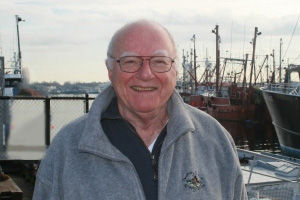December 31, 2018 — It’s pretty well known around these parts that homegrown research proved the ocean held more Atlantic sea scallops than federal regulators thought.
And a lot of folks know that the value of those succulent bivalves has made New Bedford the highest-grossing fishing port in America for 18 years running.
Starting in the late 1990s, Professor Kevin Stokesbury of the School for Marine Science and Technology at UMass Dartmouth, working with SMAST founding dean Brian Rothschild, developed a video technique to count scallops on the seafloor without harvesting or killing them.
Along the way, he pioneered a partnership with local fishermen.
Some fishermen say the research saved the New Bedford scallop industry. (Other observers point out that federal regulations protected the species at critical times.)

